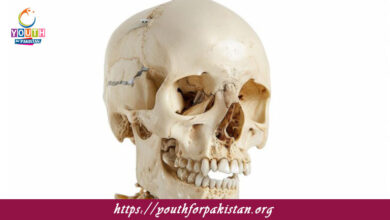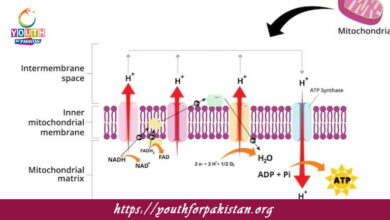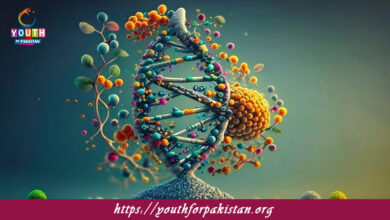Neo-Darwinism‟s MDCAT Quiz with Answers

Neo-Darwinism‟s MDCAT Quiz: Neo-Darwinism is an updated version of Charles Darwin’s theory of evolution, otherwise known as the modern synthesis of evolution. The theory incorporates the ideas of Darwinian natural selection with the discoveries in genetics, especially how traits are passed on through genes. For MDCAT students, it is very important to learn about neo-Darwinism because it is a significant area of modern evolutionary biology. Practicing with an MDCAT Quiz focused on neo-Darwinism will give you a deep understanding of this advanced evolutionary concept and better prepare you for the exam.
Key Concepts of Neo-Darwinism
Neo-Darwinism builds upon Darwin’s theory by incorporating genetic inheritance and mutation as essential mechanisms of evolution. The key concepts include:
Natural Selection: This is a process in which organisms bearing favorable traits are more likely to survive and reproduce, therefore passing those traits on to the next generation. This concept is central to neo-Darwinism, just as it was in Darwin’s original theory.
Genetic Mutation: In contrast to Darwin’s theory, which did not explain the origin of variation, Neo-Darwinism identifies mutations in genes as a source of new genetic material. Mutations can introduce new traits that may be advantageous, neutral, or harmful and provide the raw material for natural selection.
Gene Flow: The movement of genetic material from one population to another due to migration or interbreeding increases genetic variation and is an important factor in the evolution of species.
Genetic Drift: A random process in which allele frequencies in a population change by chance rather than selective forces. It has a greater effect on small populations and is an evolutionary force acting in concert with natural selection.
Speciation: Neo-Darwinism also explains speciation, the process by which new species arise from a common ancestor through gradual genetic changes over time. Isolation mechanisms such as geographic barriers or behavioral differences lead to reproductive isolation, and ultimately, the formation of distinct species.
MDCAT Quiz on Neo-Darwinism
Taking an MDCAT Quiz focused on Neo-Darwinism is a great way to cement your understanding of modern evolutionary theory. The quiz will test your knowledge of how natural selection, genetic mutations, genetic drift, and speciation act together to drive evolution. With regular practice of these quizzes, you will clarify the concepts and be prepared for similar questions on the MDCAT exam.
Free Flashcards for Neo-Darwinism
Use Free Flashcards to help you memorize the key concepts of Neo-Darwinism. Such flashcards will have important terms on one side, including mutation, genetic drift, and speciation, and examples of them on the other. There will be visual aids that make it easier to understand the genetic process behind evolution. By frequently going through these flashcards, you will retain more information and be well-prepared for questions related to modern evolutionary theory on your MDCAT exam.
Understanding Neo-Darwinism is at the core of MDCAT success, particularly for the genetics, evolutionary biology, and biodiversity sections. Incorporating these quizzes and flashcards into your study routine will increase your understanding, boost your retention, and have you confidently take on related questions on your exam.

The theory of Neo-Darwinism emphasizes the role of ________ in evolutionary change.
Genetic mutations

The concept of "fitness" in Neo-Darwinism refers to ________.
An organism's ability to survive and reproduce

According to Neo-Darwinism, evolutionary changes are driven by ________.
Natural selection and genetic variation

Neo-Darwinism incorporates the idea of ________ in explaining how traits are inherited.
Mendelian genetics

The study of genetic drift helps explain ________ in populations according to Neo-Darwinism.
Random changes in allele frequencies

The process of genetic recombination is important for ________ in Neo-Darwinism.
Increasing genetic diversity

According to Neo-Darwinism, the environment influences evolution by ________.
Acting as a selective force

Neo-Darwinism suggests that evolution occurs through ________ over many generations.
Small, incremental changes

In Neo-Darwinism, natural selection favors traits that ________.
Increase survival and reproductive success

According to Neo-Darwinism, the molecular basis of evolution is primarily ________.
Genetic mutations and changes in DNA sequences

The modern synthesis in Neo-Darwinism combines the concepts of Darwin's natural selection and ________.
Mendelian inheritance

Neo-Darwinism proposes that most evolution occurs through ________.
Small genetic changes over long periods

Neo-Darwinism rejects the idea of ________ as a mechanism for evolutionary change.
Lamarckian inheritance

In Neo-Darwinism, the term "gene pool" refers to ________.
The total genetic material present in a population

A population bottleneck in Neo-Darwinism refers to ________.
A dramatic reduction in genetic diversity

The theory of Neo-Darwinism incorporates the idea of ________ as an important evolutionary force.
Random genetic drift

According to Neo-Darwinism, adaptive radiation occurs when ________.
Species diversify rapidly due to new ecological niches

The process of ________ in Neo-Darwinism can lead to the emergence of new species.
Speciation due to reproductive isolation

According to Neo-Darwinism, the fossil record provides evidence of ________.
The gradual changes in species over time
Experience the real exam environment with our expertly designed collection of over 25,000 MCQs MDCAT Mock Tests.





